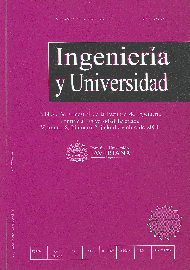Abstract
This paper presents a practical application of a modern methodology for analyzing the effects of parametric and unstructured uncertainty in the internal stability and performance of a Multivariable control system. The proposed approach is based on the complementary combination of two main mathematical concepts: first, the Linear Fractional Transformation (LFT) used as a matrix function that allows a unified representation of different types of model uncertainty. The second, the Structured Singular Value Function (SSV or m) that provides a necessary and sufficient condition for the robustness test with a moderate amount of computation complexity. The methodology is applied to a Vehicle Lateral Control System (VLCS) developed by a research team of the Automation Department of the Politecnico di Torino in partnership with Centro Ricerca FIAT (CRF) and experimentally tested in a Fiat Brava 1600 ELX in an Italian Highway.
BALAS, G., et al. (2001), m Analysis and Synthesis Toolbox, User’s Guide Version 3, Natick, the MathWorks.
BARMISH, B. et al. (1989), Robustness Margin need not be a continuous function of the Problem Data, en: Systems and Control Letters, 15, 91–98.
CERONE, V., A. Chinu, D. Regruto (2002), Experimental Results in Visionbased Lane Keeping for Highway Vehicles, en: Proceedings of IEEE American Control Conference, Anchorage, May, 869–874.
FADALI, S., L. LaForge, A. Sonbol (2001), Linear Time Computation of Robust Stability Margins, en: Proceedings of IEEE American Control Conference, June.
____________, Y. Zhang, J. Louis (1999), Robust Stability Analysis of Discrete-Time Systems Using Genetic Algorithms, en: IEEE Transactions on Systems, Man and Cibernetics, 29(5).
GERDES, J.C., E. J. Rossetter (2001), A unified Approach to Driver Assistance Systems based on Artificial Potential Field, en: ASME Journal of Dynamic Systems, Measurement, and Control, 123, septiembre, 431-438.
HUNT, K. J. (1992), Polynomial LQG and H infinite Controller Synthesis: a genetic Algorithms Solution, en: Proceedings of 31st IEEE Conference on Decision and Control, vol. 4, no. 865, 3.604-3.609.
KOJSECKÁ, J. et al. (1997), Vision based lateral Control of Vehicles, en: Proceedings of Intelligent Transportation Systems Conference, Boston.
KOJSECKÁ, J. (1997), Vision-based lateral Control of Vehicles: look-ahead and Delay Issues, Internal Memo, Department of EECS, University of California Berkeley.
KWOK, D. P., F. Sheng (1994), Genetic Algorithm and simulated Annealing for optimal Robot Arm PID Control, en: Proceedings of the 1st IEEE Conference on Evolutionary computation, 708-713.
LI, Y. et al. (1996), Genetic Algorithm automated Approach to the Design of Sliding mode Control System, en: International Journal of Control, 63(4), 721-739.
MARRISON, C. I., R. F. Stengel (1997), Robust Control System Design using Random Search and genetic Algorithms, en: IEEE Transactions on Automatic Control, 42(6), 835-839.
SHETA, A. F., K. D. Jong (1996), Parameter Estimation of nonlinear System in noisy Environments using genetic Algorithms, en: Proceedings of International Symposium on Intelligent Control, 360-365.
TANG, K. S., K. F. Man, D. W Gu (1996), Structured genetic Algorithm for robust H infinite Control Systems Design, en: IEEE Transactions on Industrial Electronics, 43(5), 575-582,
YAHIAOUI, K., Y. Haman, F. Rocaries (1997), Constrained genetic Algorithm-based computer-aided Control System Design fixed versus variable Size Population, en: Proceedings of International Symposium on Intelligent Control, 425-430.
ZHOU, K., J. Doyle (1998), Essentials of Robust Control, New Jersey, Prentice Hall.

This work is licensed under a Creative Commons Attribution 4.0 International License.
Copyright (c) 2020 Luis David Prieto-Martínez


